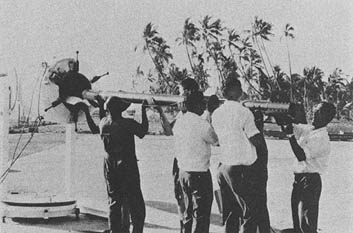|
Prahlada (scientist)
Prahlada is an Indian missile scientist, former vice chancellor of Defence Institute of Advanced Technology and a former director of Defence Research and Development Laboratory, the largest of the Defence Research and Development Organization laboratories in India, known for his contributions to Indian space programme. He was honoured by the Government of India in 2015 with Padma Shri, the fourth highest Indian civilian award. Biography Prahlada was born on 5 February 1947 in Bangalore in Madras Presidency of British India. He graduated in mechanical engineering from University Visvesvaraya College of Engineering (UVCE) which is affiliated to Bangalore University in 1969 and obtained a master's degree in aeronautical engineering from the Indian Institute of Science, with ''rockets and missile systems'' as the major. He pursued his research at the Jawaharlal Nehru Technological University, Hyderabad from where he secured a doctoral degree (PhD). He started his career with the ... [...More Info...] [...Related Items...] OR: [Wikipedia] [Google] [Baidu] |
Bangalore
Bangalore (), officially Bengaluru (), is the capital and largest city of the Indian state of Karnataka. It has a population of more than and a metropolitan population of around , making it the third most populous city and fifth most populous urban agglomeration in India, as well as the largest city in South India, and the 27th largest city in the world. Located on the Deccan Plateau, at a height of over above sea level, Bangalore has a pleasant climate throughout the year, with its parks and green spaces earning it the reputation as the "Garden City" of India. Its elevation is the highest among the major cities of India. An aerospace, heavy engineering and electronics hub since the 1960s, Bangalore is widely regarded as the "Silicon Valley of India" because of its role as the nation's leading information technology (IT) exporter.——— In the Ease of Living Index 2020 (published by the Ministry of Housing and Urban Affairs), it was ranked the most livable ... [...More Info...] [...Related Items...] OR: [Wikipedia] [Google] [Baidu] |
Aeronautical Development Establishment
Aeronautical Development Establishment is a laboratory of India's Defence Research and Development Organisation. Located in Bangalore Bangalore (), officially Bengaluru (), is the capital and largest city of the Indian state of Karnataka. It has a population of more than and a metropolitan population of around , making it the third most populous city and fifth most ..., its primary function is research and development in the field of military aviation. Recent successful projects include Lakshya (an aerial target), Nishant (a reconnaissance unmanned aerial vehicle), Nirbhay(a subsonic cruise missile), flight simulators for (LCA, Ajit, Kiran, Mig-21) and avionics packages for Tejas-LCA (display and FCC). It earlier worked on Sparrow (mini-uav) and Ulka (aerial target). History Aeronautical Development Establishment (ADE) was established in January 1959 at High Grounds, Bangalore. Technology divisions References External links {{DRDO Laboratories Defenc ... [...More Info...] [...Related Items...] OR: [Wikipedia] [Google] [Baidu] |
Indian Space Research Organization
The Indian Space Research Organisation (ISRO; ) is the national space agency of India, headquartered in Bengaluru. It operates under the Department of Space (DOS) which is directly overseen by the Prime Minister of India, while the Chairman of ISRO acts as the executive of DOS as well. ISRO is India's primary agency for performing tasks related to space-based applications, space exploration and the development of related technologies. It is one of six government space agencies in the world which possess full launch capabilities, deploy cryogenic engines, launch extraterrestrial missions and operate large fleets of artificial satellites. The Indian National Committee for Space Research (INCOSPAR) was established by Jawaharlal Nehru under the Department of Atomic Energy (DAE) in 1962, on the urging of scientist Vikram Sarabhai, recognising the need in space research. INCOSPAR grew and became ISRO in 1969, within DAE. In 1972, the government of India set up a Space Commission ... [...More Info...] [...Related Items...] OR: [Wikipedia] [Google] [Baidu] |
Hypersonic
In aerodynamics, a hypersonic speed is one that exceeds 5 times the speed of sound, often stated as starting at speeds of Mach 5 and above. The precise Mach number at which a craft can be said to be flying at hypersonic speed varies, since individual physical changes in the airflow (like molecular dissociation and ionization) occur at different speeds; these effects collectively become important around Mach 5-10. The hypersonic regime can also be alternatively defined as speeds where specific heat capacity changes with the temperature of the flow as kinetic energy of the moving object is converted into heat. Characteristics of flow While the definition of hypersonic flow can be quite vague and is generally debatable (especially due to the absence of discontinuity between supersonic and hypersonic flows), a hypersonic flow may be characterized by certain physical phenomena that can no longer be analytically discounted as in supersonic flow. The peculiarity in hypersonic flow ... [...More Info...] [...Related Items...] OR: [Wikipedia] [Google] [Baidu] |
Radar
Radar is a detection system that uses radio waves to determine the distance ('' ranging''), angle, and radial velocity of objects relative to the site. It can be used to detect aircraft, ships, spacecraft, guided missiles, motor vehicles, weather formations, and terrain. A radar system consists of a transmitter producing electromagnetic waves in the radio or microwaves domain, a transmitting antenna, a receiving antenna (often the same antenna is used for transmitting and receiving) and a receiver and processor to determine properties of the objects. Radio waves (pulsed or continuous) from the transmitter reflect off the objects and return to the receiver, giving information about the objects' locations and speeds. Radar was developed secretly for military use by several countries in the period before and during World War II. A key development was the cavity magnetron in the United Kingdom, which allowed the creation of relatively small systems with sub-meter resolution ... [...More Info...] [...Related Items...] OR: [Wikipedia] [Google] [Baidu] |
Missile
In military terminology, a missile is a missile guidance, guided airborne ranged weapon capable of self-propelled flight usually by a jet engine or rocket motor. Missiles are thus also called guided missiles or guided rockets (when a previously unguided rocket is made guided). Missiles have five system components: targeting (warfare), targeting, guidance system, flight system, engine and warhead. Missiles come in types adapted for different purposes: surface-to-surface missile, surface-to-surface and air-to-surface missiles (ballistic missile, ballistic, cruise missile, cruise, anti-ship missile, anti-ship, anti-submarine missile, anti-submarine, anti-tank missile, anti-tank, etc.), surface-to-air missiles (and anti-ballistic missile, anti-ballistic), air-to-air missiles, and anti-satellite weapons. Airborne explosive devices without propulsion are referred to as shell (projectile), shells if fired by an artillery piece and bombs if dropped by an aircraft. Unguided jet- or rocke ... [...More Info...] [...Related Items...] OR: [Wikipedia] [Google] [Baidu] |
Avionics
Avionics (a blend of ''aviation'' and ''electronics'') are the electronic systems used on aircraft. Avionic systems include communications, navigation, the display and management of multiple systems, and the hundreds of systems that are fitted to aircraft to perform individual functions. These can be as simple as a searchlight for a police helicopter or as complicated as the tactical system for an airborne early warning platform. History The term "avionics" was coined in 1949 by Philip J. Klass, senior editor at ''Aviation Week & Space Technology'' magazine as a portmanteau of "aviation electronics". Radio communication was first used in aircraft just prior to World War I. The first airborne radios were in zeppelins, but the military sparked development of light radio sets that could be carried by heavier-than-air craft, so that aerial reconnaissance biplanes could report their observations immediately in case they were shot down. The first experimental radio transmission ... [...More Info...] [...Related Items...] OR: [Wikipedia] [Google] [Baidu] |
Rocket Propulsion
A rocket (from it, rocchetto, , bobbin/spool) is a vehicle that uses jet propulsion to accelerate without using the surrounding air. A rocket engine produces thrust by reaction to exhaust expelled at high speed. Rocket engines work entirely from propellant carried within the vehicle; therefore a rocket can fly in the vacuum of space. Rockets work more efficiently in a vacuum and incur a loss of thrust due to the opposing pressure of the atmosphere. Multistage rockets are capable of attaining escape velocity from Earth and therefore can achieve unlimited maximum altitude. Compared with airbreathing engines, rockets are lightweight and powerful and capable of generating large accelerations. To control their flight, rockets rely on momentum, airfoils, auxiliary reaction engines, gimballed thrust, momentum wheels, deflection of the exhaust stream, propellant flow, spin, or gravity. Rockets for military and recreational uses date back to at least 13th-century China. Signif ... [...More Info...] [...Related Items...] OR: [Wikipedia] [Google] [Baidu] |
Akash SAM
Akash (IAST: Ākāśa, ) is a medium-range mobile surface-to-air missile (SAM) system developed by the Defence Research and Development Organisation (DRDO) and produced by Bharat Dynamics Limited (BDL). Surveillance and Fire control radar, tactical control and command center and missile launcher are developed by Bharat Electronics (BEL), Tata Power Strategic Engineering Division and Larsen & Toubro.AKASH AIR DEFENSE WEAPON SYSTEM The Akash missile system can target aircraft up to away. It has the capability to neutralise aerial targets like fighter jets, cruise missiles and air-to-surface missiles as well as |
Brahmos Imds
The BrahMos (also designated as PJ-10)India Displays Big Missiles at Defense Show . ''Aviation International News''. 19 April 2018. is a medium-range stealth ramjet Cruise missile#Supersonic, supersonic cruise missile that can be launched from submarine, ships, airplanes or land, notably being the fastest supersonic cruise missile in the world at the time of introducing. It is a joint-venture between the Indian Defence Research and Development Organisation (DRDO) and the Russia, Russian Federation's NPO Mashinostroyeniya, who together have formed BrahMos Aerospace. It is based on the Russian P-800 Oniks supersonic anti-ship cruise missile. The name BrahMos ... [...More Info...] [...Related Items...] OR: [Wikipedia] [Google] [Baidu] |
Federation Of Indian Chambers Of Commerce And Industry
The Federation of Indian Chambers of Commerce & Industry (FICCI) is a non-governmental trade association and advocacy group based in India. History Established in 1927, on the advice of Mahatma Gandhi by Indian businessman G.D. Birla and Purshottamdas Thakurdas. It is the largest, one of the oldest and the apex business organisation in India. It is a non-government, not-for-profit organisation. FICCI draws its membership from the corporate sector, both private and public, including SMEs and MNCs. The chamber has an indirect membership of over 250,000 companies from various regional chambers of commerce. It is involved in sector-specific business building, business promotion and networking. Currently, it is headquartered in the national capital New Delhi and has a presence in 12 states in India and 8 countries around the world. Allied Organisations Confederation of Indian Food Trade and Industry Confederation of Indian Food Trade and Industry (CIFTI) caters to ... [...More Info...] [...Related Items...] OR: [Wikipedia] [Google] [Baidu] |
Ministry Of Human Resource Development (India)
The Ministry of Education ( MoE; formerly the Ministry of Human Resource Development from 1985 to 2020) is a ministry of the Government of India, responsible for the implementation of the National Policy on Education. The Ministry is further divided into two departments: the Department of School Education and Literacy, which deals with primary, secondary and higher secondary education, adult education and literacy, and the Department of Higher Education, which deals with university level education, technical education, scholarships, etc. The current education minister is Dharmendra Pradhan, a member of the Council of Ministers. India had the Ministry of Education since 1947. In 1985, Rajiv Gandhi government changed its name to Ministry of Human Resource Development (MHRD) and with the public announcement of newly drafted " National Education Policy 2020" by the Narendra Modi government, Ministry of Human Resource Development was renamed back to Ministry of Education. Poli ... [...More Info...] [...Related Items...] OR: [Wikipedia] [Google] [Baidu] |



_Mach_7_computational_fluid_dynamic_(CFD).jpg)





